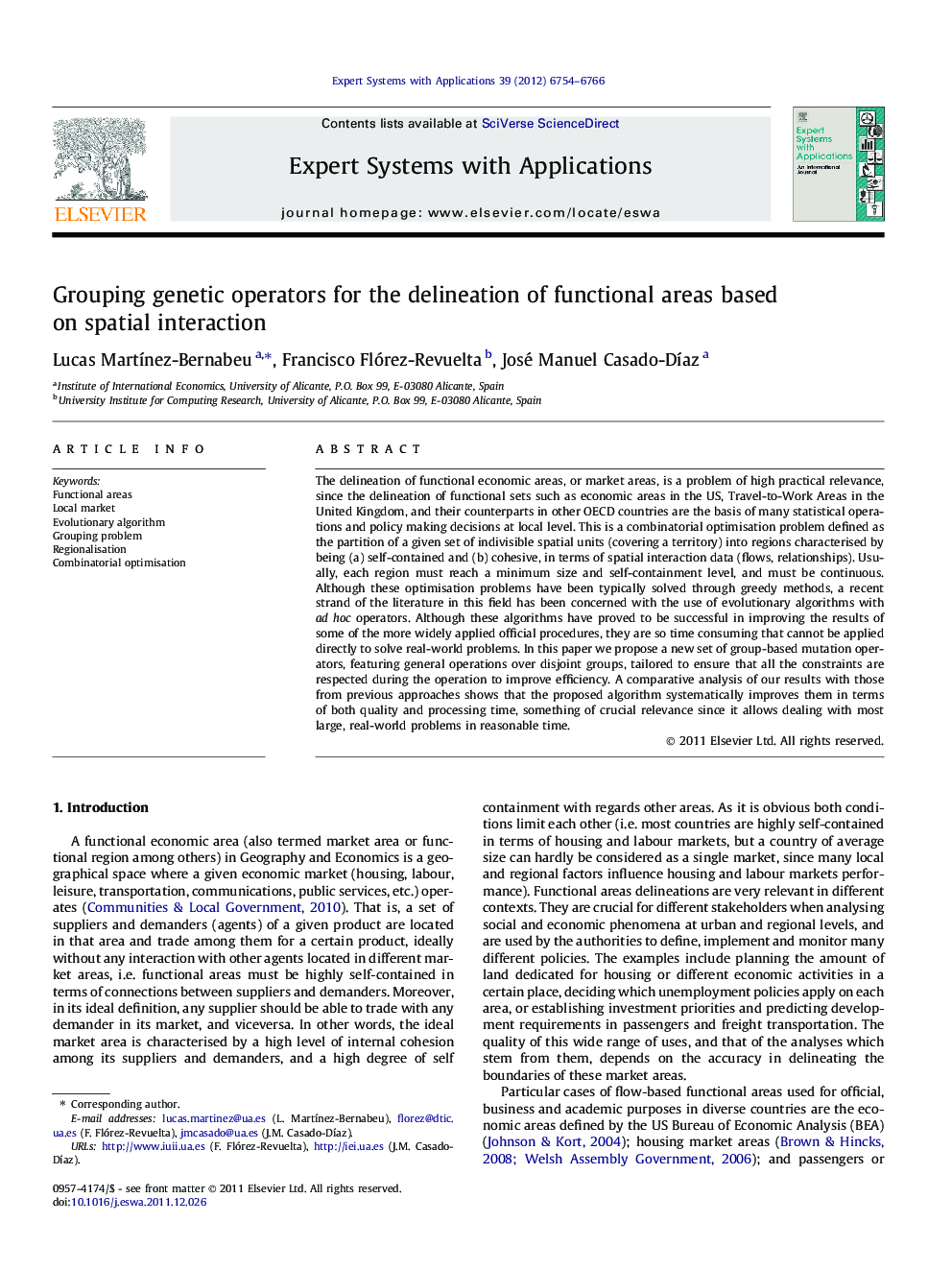| کد مقاله | کد نشریه | سال انتشار | مقاله انگلیسی | نسخه تمام متن |
|---|---|---|---|---|
| 384356 | 660846 | 2012 | 13 صفحه PDF | دانلود رایگان |

The delineation of functional economic areas, or market areas, is a problem of high practical relevance, since the delineation of functional sets such as economic areas in the US, Travel-to-Work Areas in the United Kingdom, and their counterparts in other OECD countries are the basis of many statistical operations and policy making decisions at local level. This is a combinatorial optimisation problem defined as the partition of a given set of indivisible spatial units (covering a territory) into regions characterised by being (a) self-contained and (b) cohesive, in terms of spatial interaction data (flows, relationships). Usually, each region must reach a minimum size and self-containment level, and must be continuous. Although these optimisation problems have been typically solved through greedy methods, a recent strand of the literature in this field has been concerned with the use of evolutionary algorithms with ad hoc operators. Although these algorithms have proved to be successful in improving the results of some of the more widely applied official procedures, they are so time consuming that cannot be applied directly to solve real-world problems. In this paper we propose a new set of group-based mutation operators, featuring general operations over disjoint groups, tailored to ensure that all the constraints are respected during the operation to improve efficiency. A comparative analysis of our results with those from previous approaches shows that the proposed algorithm systematically improves them in terms of both quality and processing time, something of crucial relevance since it allows dealing with most large, real-world problems in reasonable time.
► Delimitation of market areas: must be self-contained, cohesive and continuous.
► NP-hard combinatorial optimisation problem typically solved through greedy methods.
► Recent evolutionary algorithms with ad hoc operators were too computationally costly.
► New set of group-based operators featuring general operations over disjoint groups.
► Outperforms any previous results and can deal with real-world cases.
Journal: Expert Systems with Applications - Volume 39, Issue 8, 15 June 2012, Pages 6754–6766